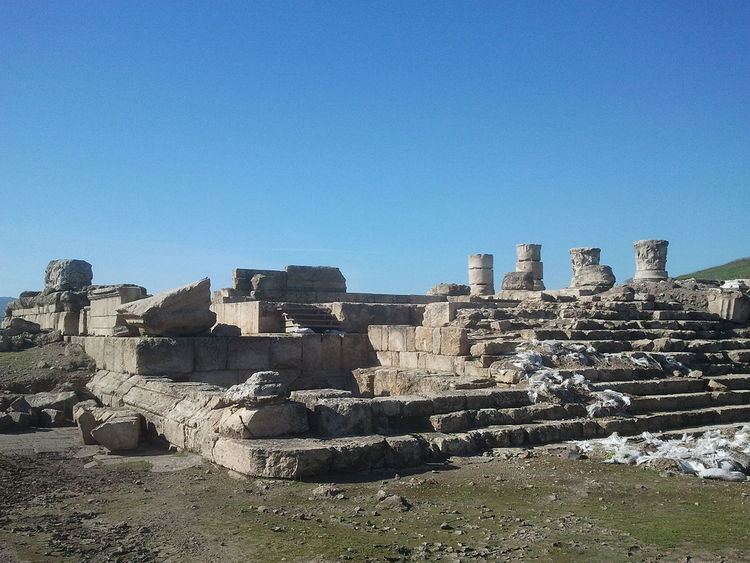 | ||
Similar Banias, Augusteum, Caesarea Maritima, Nimrod Fortress, Herodium | ||
Omrit is an archaeological site located in the northeast corner of the Hulah Valley, Israel. Also known as Horbat Omrit, it sits atop a foothill of Mount Hermon.
Contents
Omrit vs banias
History
After a brushfire cleared the area in 1998, archaeological excavations began led by Professor Andrew J. Overman of Macalester College, with the assistance of nearby Kfar Szold. The region was well trodden by Roman influence, and thus far excavations have yielded three phases of temple construction approximated at mid 1st century BCE, 20 BCE and 1st century CE. The site is located approximately 2.5 miles southwest of Banias, adjacent to a Roman road connecting cities in the region. It is this Roman road and temple complex that some scholars believe was referred to by Flavius Josephus in descriptions of the Golan region.
Given its proximity to Banias and the presence of corinthian temple ruins, it is likely that Omrit is the site of the third temple built of limestone and plaster by King Herod in Honor of Augustus around 20 BCE.
Omrit is situated on a low hill overlooking Hula Lake. North of the site are remains of the Roman Scythopolis - Damascus road, one of the country’s main arteries, including a guard tower and a sacred compound. The temple compound, in the center of the hill, was connected to the road by way of a street lined with columns, as was customary in the eastern provinces of the Roman Empire. It continued to be used into the Byzantine period. The remains of shops and installations such as a wine press, were discovered there.
